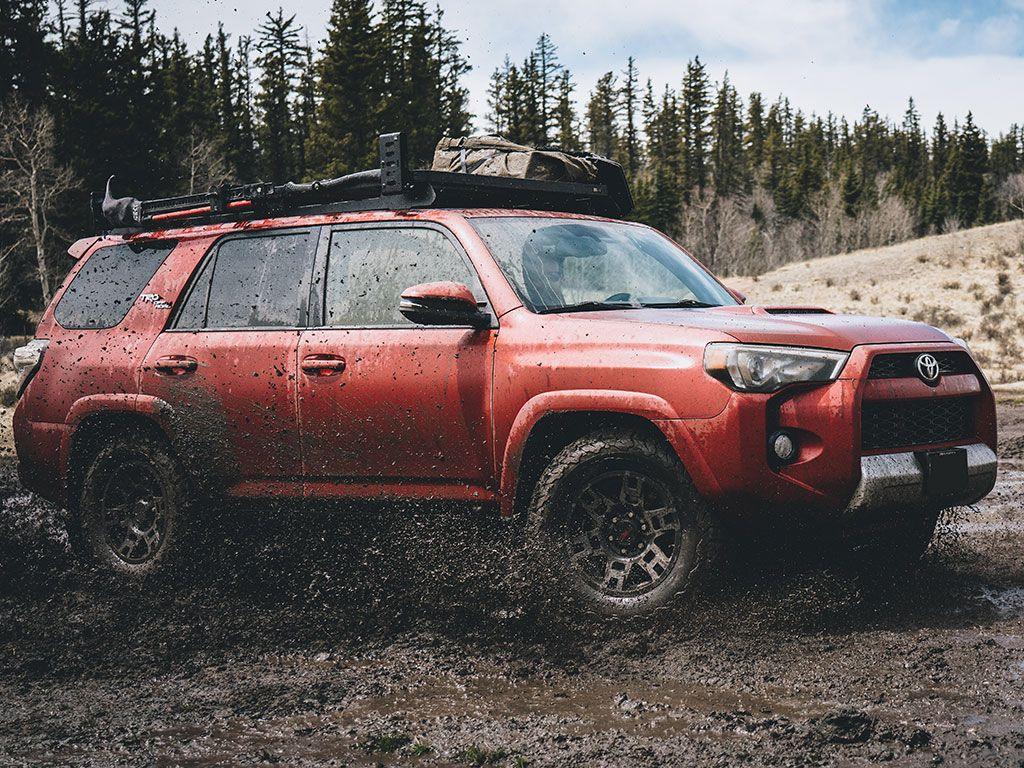How Much Weight Can You Put On Your Roof Rack

"Do Not Overload Your Roof Rack"

We all agree at some point that having enough knowledge in a particular area whether it's for work, business, passion, career, or a hobby can put us one step ahead of the competition. This article will give us a grasp of knowledge why it is important not to overload our roof rack we currently have when we are driving. Plus, we'll get to know what are the differences between the dynamic and static weight of your vehicle and why we need to take that into account or consideration for us to have the best experience and to keep us away from any unforeseen circumstances.
Nowadays, many vehicle owners are not pretty aware of how much roof rack weight capacity their vehicle can support and some of them found this matter more confusing especially if the vehicle owner is still a rookie. Understanding how much weight your vehicle can support if you mount a roof rack and rooftop tent plays a vital role in ensuring a safe ride and giving the best experience now and then. Take note: Every vehicle has its weight limit so it is very important to be aware of this piece of information.
Why Roof Weight Should Be Considered?

Simple. The weight you distributed on your vehicle’s roof can affect the performance of your ride. Some drivers even have a hard time doing accelerating and braking because of the weight they have on the roof and it made them stop and reduce the weight for them to continue to drive safely and seamlessly.
That’s too much hassle, isn’t it? Worst case scenario, it may cause the vehicle to lose balance. The key to avoiding any inconvenience such as this or potential harm while driving on the road is to have proper knowledge of the weight capacity of your vehicle and stay within that limit. Ignorance is fatal so much better to be fully equipped with knowledge in such things.
At this juncture, let’s talk about the difference between Dynamic and Static Weight and what importance they bring if you decide to mount a roof rack, rooftop tent, or other items on your vehicle.
“Dynamic Weight Capacity”
Don’t be confused. Dynamic is the term often used when the vehicle is in motion. Since we are talking about the weight capacity of the vehicle while driving – it simply refers to the amount of weight you can support on your vehicle roof while it is in motion or the amount of weight your vehicle’s manufacturer determines that your roof can handle.
Bear in mind – the Dynamic weight capacity (DWC) is always lower than the static weight capacity. As we’ve discussed above, the weight on your roof can affect your driving experience while you’re on the road.
Take this as an example:
If your vehicle has a dynamic weight capacity of 200lbs or roughly 100kgs and you want to mount a roof rack on the roof, then you need to subtract the weight of the roof rack. If it weighs 30kg, then you’ve got a 70kgs load limit left. If you want to add a rooftop tent and it weighs 45kgs, then you’ve got a 25kgs load limit left.
But this computation does not apply in every vehicle since each vehicle has its own dynamic weight capacity and static weight capacity and you can find this information in the owner or user’s manual of your vehicle.
“Static Weight Capacity”
Static is the term often used when the vehicle is not in motion. It refers to the state of the vehicle when it's parked. Static Weight Capacity (SWC) refers to the amount of weight your vehicle can support on its roof when it's not moving. It is generally higher than dynamic weight capacity and gives you the option to put more weight on the roof when static since the rule of thumb is that static is 3x-6x higher than dynamic weight capacity.
Does my vehicle have an off-road load capacity?
That’s a good question. Generally, if you want to bring your truck or vehicle to the wild, you need to reduce the dynamic weight capacity by about a third and you can also make some research if your truck has an off-road load rating or consult with professionals if you’re unsure. But most vehicles do and it's much lower than the normal dynamic weight capacity.
Why? Because you need to consider the location where you want to do off-roading. If the location is not the usual road you are taking in your area or downtown, then you are putting a lot of pressure on your truck or vehicle and it may result in losing the balance and damaging the bolts of the roof rack that may cause disaster or injury. Rule of thumb when doing off-roading; reduce weight up to 20% than the normal dynamic weight capacity.
Are all vehicles or trucks have the same Dynamic and Static Weight Capacities?
Certainly not. All vehicles have different Dynamic and Static Weight Capacities. It depends on your vehicle type, model, and year. Take also into consideration if you have a roof rack or crossbars installed.
Does my 4x4 truck require a specific roof rack to meet the Dynamic and Static Weight Capacities?
Nope. Any roof rack will do. But you need to check the compatibility, capacity, and weight because it also plays a vital role to meet the dynamic and static weight capacities for your safety.
How much weight can I put on my roof rack?
Take this as an example:
If your vehicle or 4x4 truck has a dynamic weight capacity of 170lbs or 77.1kgs and your roof rack weighs 48 lbs or 22kgs, then you only have 121.5 lbs or 55.1kgs left on the vehicle’s roof to fill. It’s a rule of thumb that you should subtract the weight of the roof rack to keep the weight balance and stay within the weight limit of the roof’s vehicle. Take note that you should not try to exceed the truck’s roof weight limit to test its capabilities because this may lead to disaster and injury when you’re on the road. There’s no room for mistakes!
Going back, since you still have 121.5 lbs or 55.1kgs left, you can mount your roof top tent which usually weighs around 110 to 120 lbs or 50 to 55kgs. If you decide to do so, then you only have around 1 few pounds left that you can use for your excess equipment or accessories that you can organize on top.
But this can change when your vehicle is not in motion. The load limit is higher than the normal dynamic weight capacity. Remember, when the car is not moving the weight limit is 3x-6x higher than dynamic weight capacity. That means using the roof top tent at night to rest and adding more items will no longer be a problem since your truck is not in motion.
If your vehicle has a Front Runner Roof Rack or you plan to buy one, one thing to consider is the roof rack load rating. What is this?
The roof rack load rating is the amount of weight the roof rack’s manufacturer determines the rack can handle. It is also an important thing to consider that it should stay well under the vehicle’s roof weight limit or capacity.
To wrap this up:
We must know the load limit of your roof vehicle or 4x4 truck. Most of the vehicles have this information in the user’s manual. Knowing these details can help you study and examine what are the things you can mount or arrange on the roof of your truck to avoid overloading. It is important to take things like this into account to avoid creating difficult and deadly situations on the road.
Don’t rely on the information you’ve seen on social media or other information outlets. Take responsibility to take action and do your research to get accurate information. At the end of the day, you’ll benefit from it and keeps you away from any harm or danger.
Don’t forget to check our website or call us if you need help and want to save time. Customers are our universe so we’ll make sure that your satisfaction will be guaranteed.
Email us at: info@offroadtents.com
Call us at: 844-200-3979
Lastly, surround yourself with the same interests as yours. Join our Facebook Group Page. CLICK HERE.



